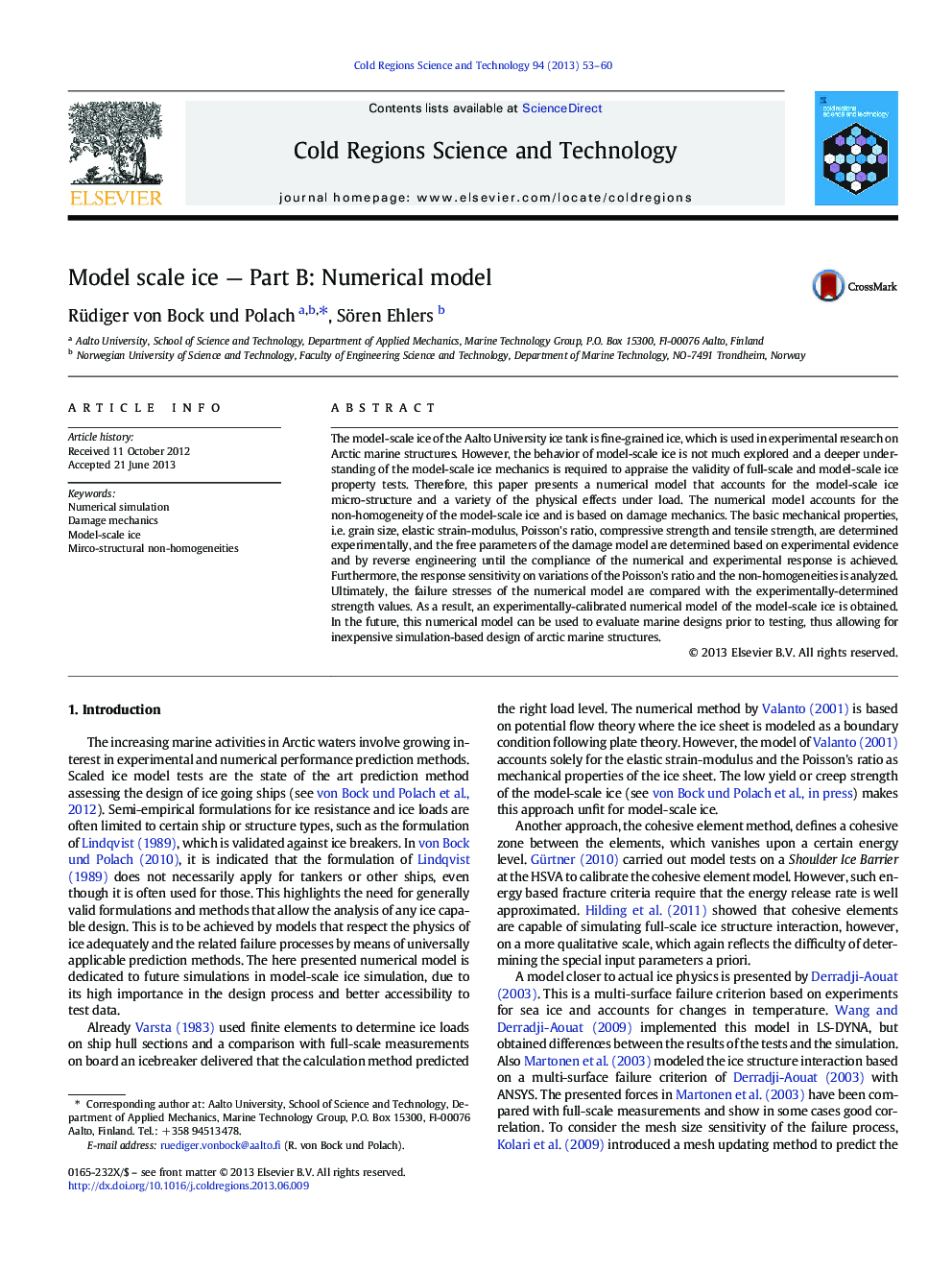| Article ID | Journal | Published Year | Pages | File Type |
|---|---|---|---|---|
| 6426974 | Cold Regions Science and Technology | 2013 | 8 Pages |
â¢The numerical model uses basic input parameters from experiments.â¢The micro-structural non-homogeneity is accounted.â¢The model is based on damage mechanics.â¢Voids do not explain material response variation fully.
The model-scale ice of the Aalto University ice tank is fine-grained ice, which is used in experimental research on Arctic marine structures. However, the behavior of model-scale ice is not much explored and a deeper understanding of the model-scale ice mechanics is required to appraise the validity of full-scale and model-scale ice property tests. Therefore, this paper presents a numerical model that accounts for the model-scale ice micro-structure and a variety of the physical effects under load. The numerical model accounts for the non-homogeneity of the model-scale ice and is based on damage mechanics. The basic mechanical properties, i.e. grain size, elastic strain-modulus, Poisson's ratio, compressive strength and tensile strength, are determined experimentally, and the free parameters of the damage model are determined based on experimental evidence and by reverse engineering until the compliance of the numerical and experimental response is achieved. Furthermore, the response sensitivity on variations of the Poisson's ratio and the non-homogeneities is analyzed. Ultimately, the failure stresses of the numerical model are compared with the experimentally-determined strength values. As a result, an experimentally-calibrated numerical model of the model-scale ice is obtained. In the future, this numerical model can be used to evaluate marine designs prior to testing, thus allowing for inexpensive simulation-based design of arctic marine structures.
